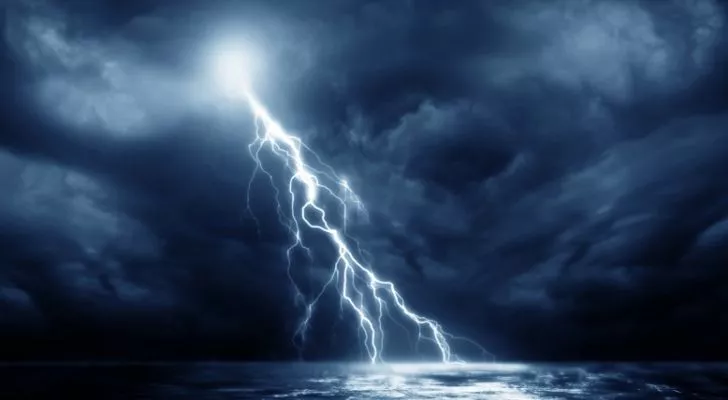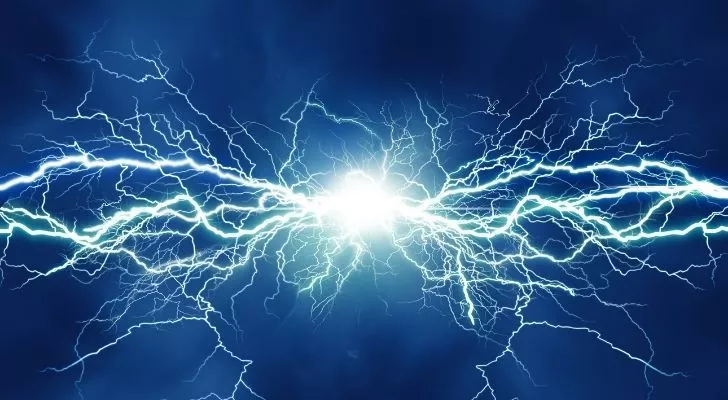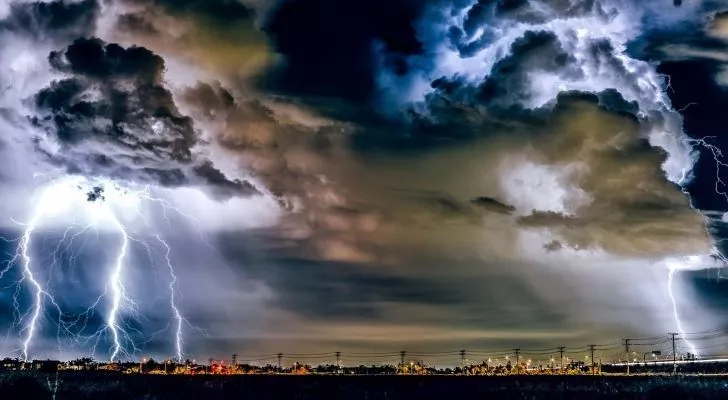What Causes Thunder And Lightning?
A thunderstorm is when a cumulonimbus cloud builds up too much energy.
This happens when all the frozen water particles move around the cloud at high speed and bump into each other. These collisions create an electrical charge.
Once the electrical charge has built up in the cloud, the positive protons form at the top of the cloud, and the negative protons gather at the bottom.
The buildup becomes positively charged and needs to be released, causing a thunderstorm.
What is lightning?

Lightning is the bright flash of light or electricity that is caused by a thunderstorm.
When protons have built up in the cloud, they attract oppositely charged protons around them.
This means that positively charged protons on the ground below will attract the negatively charged protons on the bottom of the cloud.
The negatively charged protons from the cloud will be attracted to any positively charged protons close by so in things such as mountains, people, or trees.
The charge coming from these ground points will eventually meet the negative protons in the cloud, which causes lightning to strike.
This is the same as when you experience a static shock.
Lightning is the electrical surge created between the cloud and earth, and lightning is the result.
What is thunder?

Thunder is the sound of the lightning bolt.
The rumble that we call thunder is the sound of the vibrations created by the lightning.
When the charge happens, it vibrates particles as it moves.
Because lightning is such a large discharge of energy, the vibrations it causes are massive.
Lightning bolts are also very hot, and this immediate heat causes air particles to expand, which creates more force.
These vibrations travel as sound waves to our ears, and we hear a rumble as a result.
If you are close enough to a lightning strike, you might hear a crack or whip noise.
We hear a more crisp sound when closer because the sound waves of the lighting vibrations have not become distorted by bouncing off surrounding objects.
Why don’t we hear thunder at the same time as seeing lightning?

The main reason for not hearing thunder at the same time as seeing lightning is that sound waves travel slower than light.
Light waves travel at a faster speed, so we will see the flash before we hear the rumble.
There is a myth that if you count the time between seeing the flash and hearing the rumble, you can tell how far away the storm is.


No comments:
Post a Comment